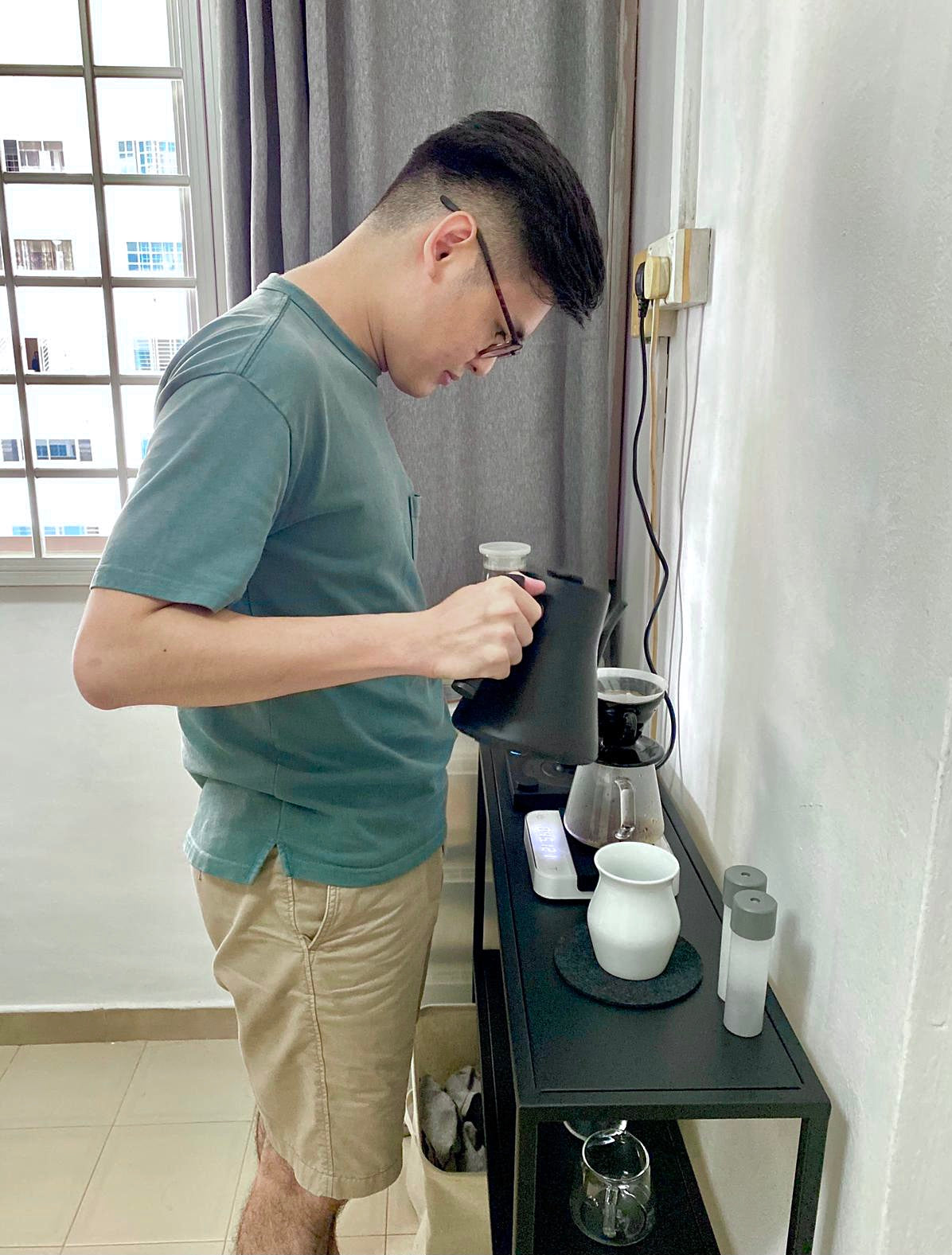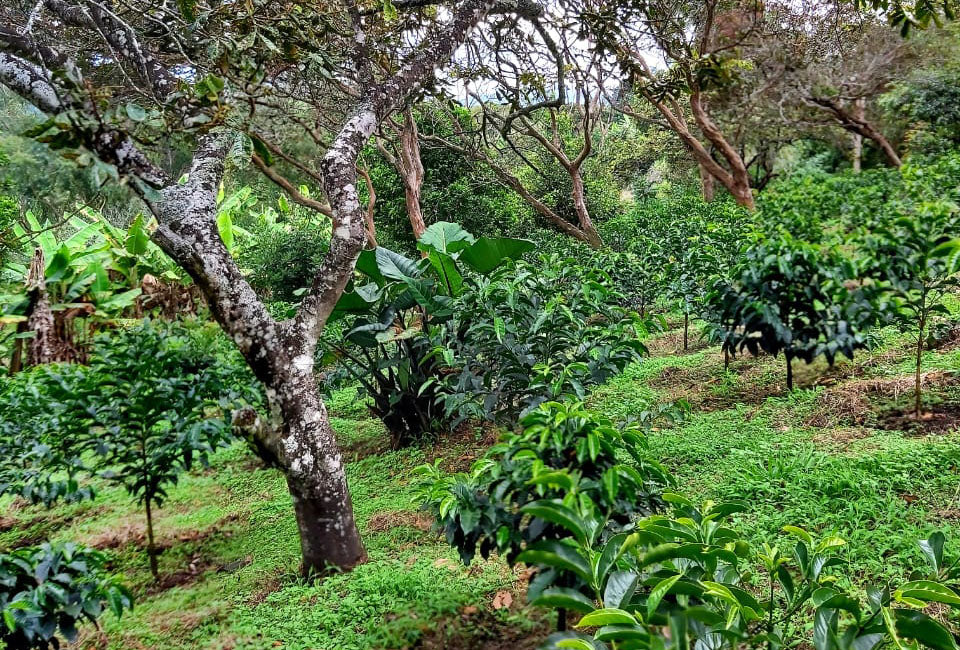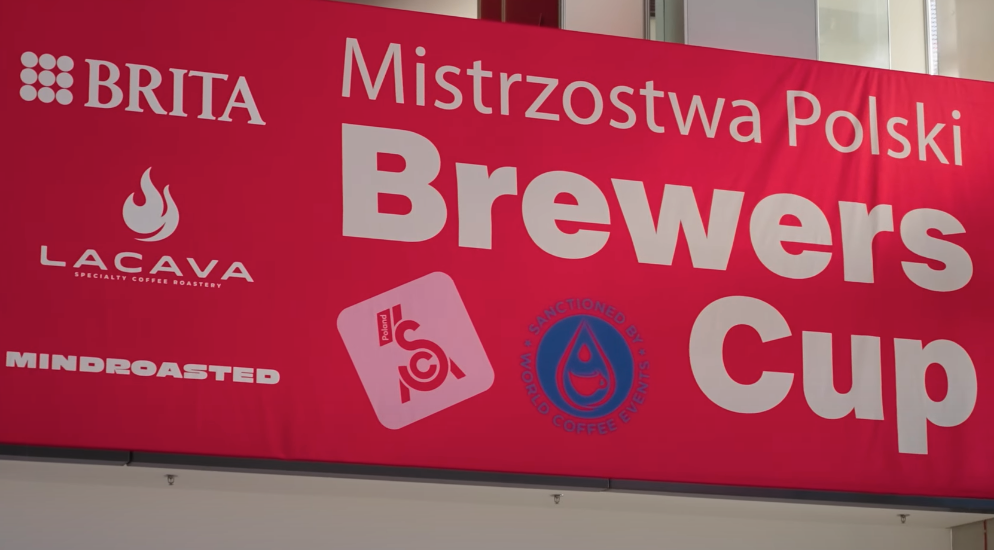Saun, a coffee warrior from Singapore, provides his insights and experiences while preparing and enjoying high-end coffees. Having battled many coffee origins and varieties, he shares his valuable input, tips and tricks particular to brew parameters and water.
Thank you Ivica for this opportunity to share my experiences in brewing. A bit of background on myself, I first started out as a home-brewer back in 2015. I fondly recall becoming intrigued about filter coffee after drinking a delicious cup of Kenyan coffee that tasted like blackcurrants. At that time, I never thought that coffee could taste so good, as filter coffee was not that common yet in Singapore. That cup of coffee led me to buy my first v60 and kickstarted my coffee journey. These days, as specialty coffee cafes has become more commonplace, it is very heartening for me to see many more people appreciating filter coffee, some even becoming home-brewers themselves.
I had also been quite fortunate to be able to work part-time as a barista in a few cafes. I am thankful to be able to meet so many friends throughout the years, and learnt so much about coffee from them. Coffee really brings people together! One of the many joys of working as a barista are the conversations with customers from all walks of life. A common question which I always encounter from customers who may be home brewers themselves is “what is your brew recipe/ratio?” or “how should I brew this coffee?”. Learning from my experiences both brewing at home as well as in a cafe, I like to share these two points: (i) brew recipe; and (ii) water for coffee.
1. Brew Parameters
In Saun's words: I enjoy brewing with 13g of coffee on a V60/Origami dripper. I typically begin with a grind setting at 25 — 28 'clicks' on a Comandante C40 grinder, with water temperature set to 92 — 95°C.This is the recipe which I typically start with:
- Bloom/pre-infuse with 40g of water (for 30s)
- At 0:30, Pour 70g of water (to 110g)*
- At 0:55, Pour 60g of water (to 170g)*
- At 1:25, Pour remaining water to desired ratio (from 180 to 220g)
As the above recipe may have alluded to, my personal thoughts about brewing is that rather than to follow a fixed recipe, I feel that one should always have some “situational awareness” over the brewing process. Hence, one of the tips which I like to give as part of this recipe is to help people realise that there is a relationship between the drawdown time and the total amount of water to use in a brew.
Specifically, I start by explaining that you may notice when brewing, different coffees would have different drawdown times — or how long it takes for water to flow through the coffee bed during each pour you make (even at the same grind setting). This difference in drawdown time is a result of different coffees having different solubilities. That is, coffees which are less soluble, for example lighter roasts, or “denser” varietals (e.g., Ethiopian Heirloom) are likely to drawdown at noticeably slower rate. As a result, such coffees will naturally be extracted more (i.e., higher TDS/strength) due to the longer contact time between water and coffee (and overall longer total brew time). On the other hand, for coffees which are more soluble such as more developed roasts or coffees grown in lower altitudes (e.g., grown in Asia, such as Indonesia or Myanmar), they are likely to drawdown noticeably quicker, and are hence more likely to be extracted less (i.e., lower TDS/strength) due to the shorter contact time your water has with the coffee.
Therefore, by using the drawdown time during the second pour (and/or third, depending on your total number of pours) as a visual indicator, you can get a rough sense of how much you are extracting during the brew process itself, which you could then use to determine the final brew ratio, by adjusting the amount of water to use during your last pour. For instance, as a slower drawdown time would mean more extraction, you could pour more water in the last pour to reach a higher coffee to water ratio (e.g., ~1:16; pour till 208g), but if the drawdown is faster, go for a lower ratio by pouring lesser water (e.g., ~1:14; till 180g). By adjusting and deciding on your final brew ratio during the brew itself, it is an easy way to ensure that the strength of your final cup would be more ideal, and you should get a better tasting cup of coffee as a result.
It is my hope that from such tips, it will push more people to want to learn more about these different characteristics of coffee (i.e., origin information, varietal, processing and roast information) and how such knowledge are necessary to be able to improve one’s brewing, and ultimately brew a better cup of coffee.

2. Water for Coffee
Secondly, another tip which I like to recommend to home brewers is to consider investing their budget (and effort) to make their own water for brewing. In recent years, there have been various “water for coffee” products such as Third Wave Water or Aquacode, which I really believe helps to improve the home-brewing experience, more so than buying a new dripper or upgrading your coffee grinder. For myself, I am using Aquacode sachets diluted with 7.5L of water (=70ppm). I find that this water hardness is ideal for brewing most coffee, though I would recommend you to experiment for yourself.

Finally, thank you Ivica and Coffea Circulor for all the delicious coffee!
Words cannot describe how much me and my friends enjoyed the selection from Finca Stal — Lissy, with its amazing perfume-like aromatics and floral flavors that reminds me of a certain brand’s pear and freesia cologne; Lynn, with its unforgettable flavors of blackcurrant candy, as well as Lily, with its sweet mix of melon and muscats.
I was also pleasantly surprised with the Kenya Ruby, as it had been awhile since I had a Kenyan that did not came with a tomato-like acidity. One of the best Kenyan I had in recent memory, the single variety Ruby Batian had a vibrant apricot acidity, paired with flavors of fresh strawberries when hot that cools into black currants and red grapes — rekindling the memories of my first cup of filter coffee.
Am definitely looking forward to more amazing coffees experience with Coffea Circulor!
“We share these insights regardless if being a master brewer or enthusiast to ensure consistent worldwide experiences.” - Ivica



